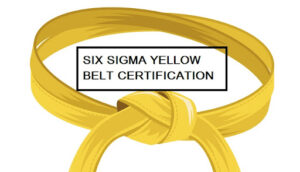The Role of Laser Level Machines in Modern Infrastructure Projects
In the fast-paced world of construction and infrastructure development, precision is everything. A small error in leveling or alignment can...

In the fast-paced world of construction and infrastructure development, precision is everything. A small error in leveling or alignment can cause costly delays, compromise structural integrity, and lead to safety hazards. This is where the Laser Level Machine has emerged as a game-changer. By providing accurate leveling and alignment, laser level technology has become a must-have tool for engineers, contractors, and surveyors.
In this blog, we’ll explore the role of laser level machines in modern infrastructure projects, their benefits, applications, and how the best Laser Level Machine Manufacturers and Laser Level Machine Suppliers are shaping the industry.
What is a Laser Level Machine?
A Laser Level Machine is a precision instrument that projects a laser beam—either horizontal, vertical, or both—to provide a constant and highly accurate reference line for leveling and alignment tasks. These machines can be manual, self-leveling, rotary, or line-based, depending on the project requirements.
They are widely used in infrastructure projects like roads, bridges, railways, tunnels, and high-rise buildings, where accuracy is non-negotiable.
Why Laser Level Machines are Vital in Modern Infrastructure
In the past, leveling work relied on manual tools such as spirit levels and theodolites, which required more time, labor, and skill. Today, Laser Level Machines bring:
- Higher Accuracy: Achieve millimeter-level precision over long distances.
- Time Savings: Reduce setup and measurement time significantly.
- Labor Efficiency: Fewer workers needed for leveling tasks.
- Versatility: Suitable for a wide range of construction and surveying tasks.
In short, they make modern infrastructure development faster, safer, and more cost-effective.
Key Applications in Infrastructure Projects
1. Road and Highway Construction
For road construction, ensuring the right gradient and alignment is critical. Laser Level Machines help in setting base elevations, grading, and aligning surfaces for proper drainage and smooth rides.
2. Bridge Building
Bridges require extreme precision in foundation alignment, girder placement, and deck leveling. Using a laser level ensures all components are perfectly aligned, avoiding costly corrections later.
3. Railway Tracks
In railway projects, even a slight misalignment can lead to safety issues. Laser level machines help in track bed preparation, ensuring perfect parallel alignment over long distances.
4. Tunnel Construction
In tunnel excavation, maintaining accurate grades and directions is essential. Laser levels project reference lines that guide excavation teams with precision.
5. High-Rise and Commercial Buildings
From laying the foundation to aligning floors, walls, and ceilings, Laser Level Machines ensure all structural elements are perfectly level and plumb.
Types of Laser Level Machines Used in Infrastructure
- Rotary Laser Levels – Projects a 360° laser beam, ideal for large-scale infrastructure work.
- Line Laser Levels – Emits straight lines horizontally, vertically, or both; perfect for layout work.
- Dot Laser Levels – Provides precise point references for alignment.
- Grade Laser Levels – Used for projects requiring a specific slope or gradient, such as drainage systems.
Benefits of Using Laser Level Machines
- Unmatched Accuracy: Critical in avoiding costly structural errors.
- Reduced Human Error: Automated self-leveling minimizes mistakes.
- Faster Completion: Speeds up measuring and alignment work.
- Cost Savings: Reduces rework and material wastage.
- Safety Compliance: Helps meet engineering and safety standards in infrastructure projects.
Choosing the Right Laser Level Machine for Your Project
When selecting a Laser Level Machine, consider:
- Project Size and Type – Large infrastructure projects often need rotary laser levels.
- Accuracy Requirements – Higher precision models for bridges, tunnels, and high-rise buildings.
- Environmental Conditions – Choose machines with dust, shock, and water resistance.
- Battery Life and Range – Essential for remote and extended operations.
Working with reputable Laser Level Machine Manufacturers and Laser Level Machine Suppliers ensures that you get durable, high-precision tools backed by service support.
How Manufacturers and Suppliers are Driving Innovation
Top Laser Level Machine Manufacturers are integrating features like:
- Bluetooth Connectivity for remote operation.
- Digital Displays for real-time reading.
- Self-Leveling and Auto-Shutdown to save battery.
- Rugged Housing for harsh site conditions.
Meanwhile, Laser Level Machine Suppliers are offering rental services, training, and after-sales support, making the technology more accessible for contractors and small-scale builders.
Future Trends in Laser Level Technology
The next decade will see Laser Level Machines becoming even more advanced:
- AI-powered alignment for predictive error correction.
- Integration with Building Information Modeling (BIM) systems.
- Green Laser Technology for higher visibility in bright conditions.
- IoT-enabled tracking for better fleet management in large projects.
These innovations will further enhance accuracy, efficiency, and safety in infrastructure development.
Conclusion
Modern infrastructure projects demand tools that can keep pace with complex engineering requirements. The Laser Level Machine has proven itself as an indispensable asset, delivering unmatched precision, saving time, and improving project quality.
Whether you are a large-scale infrastructure contractor or a small builder, investing in a high-quality machine from trusted Laser Level Machine Manufacturers or Laser Level Machine Suppliers will pay off in long-term reliability and performance.
As technology advances, the role of laser level machines will only grow—transforming how we build the roads, bridges, and cities of tomorrow.



